We sound like a broken record
We’ve written about this before and we will continue to write about it because it will never cease to be relevant. The cost and budgeting of video production is a finicky thing and may seem hard to navigate, but, hopefully, we can navigate through that here.
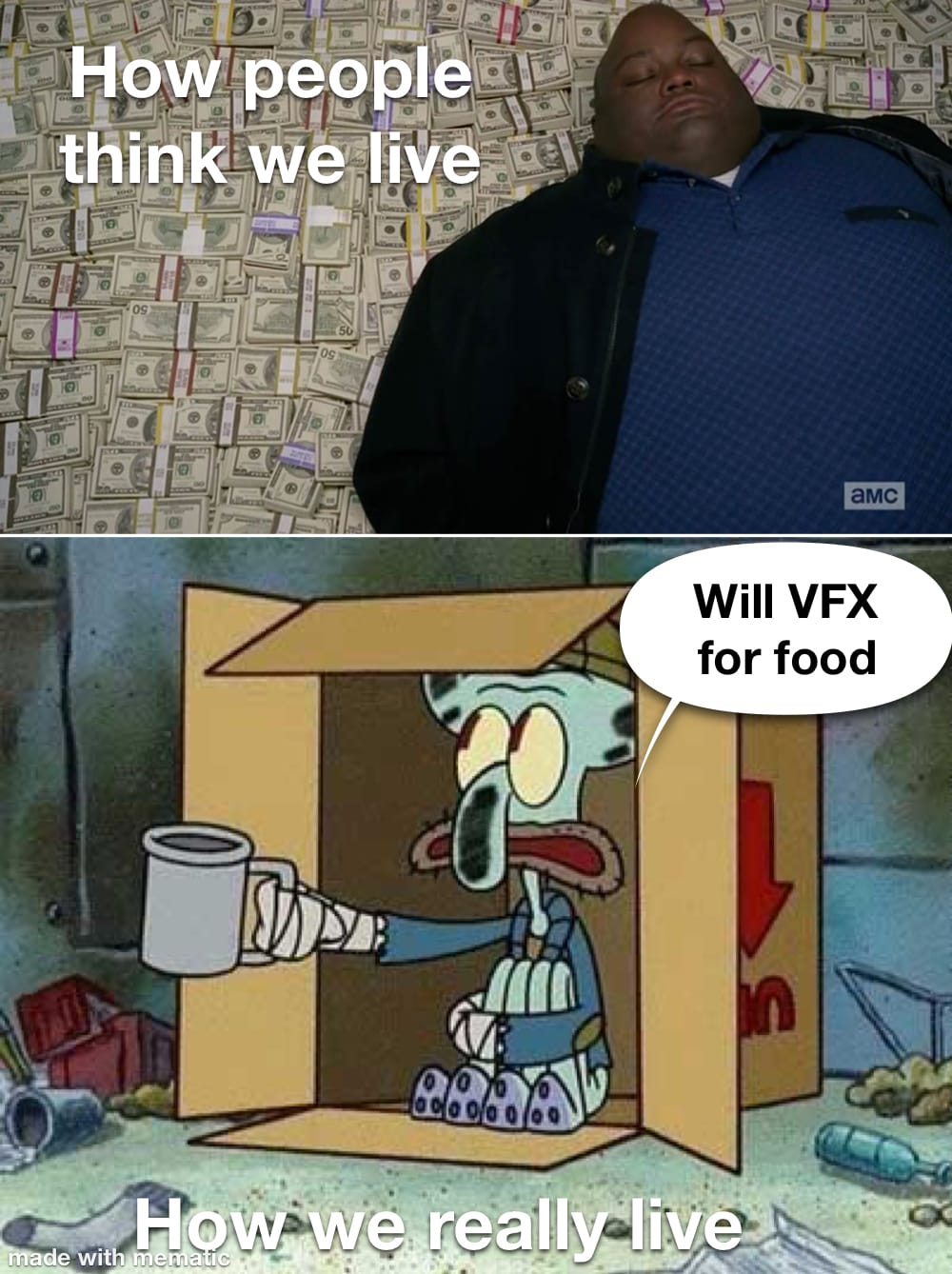
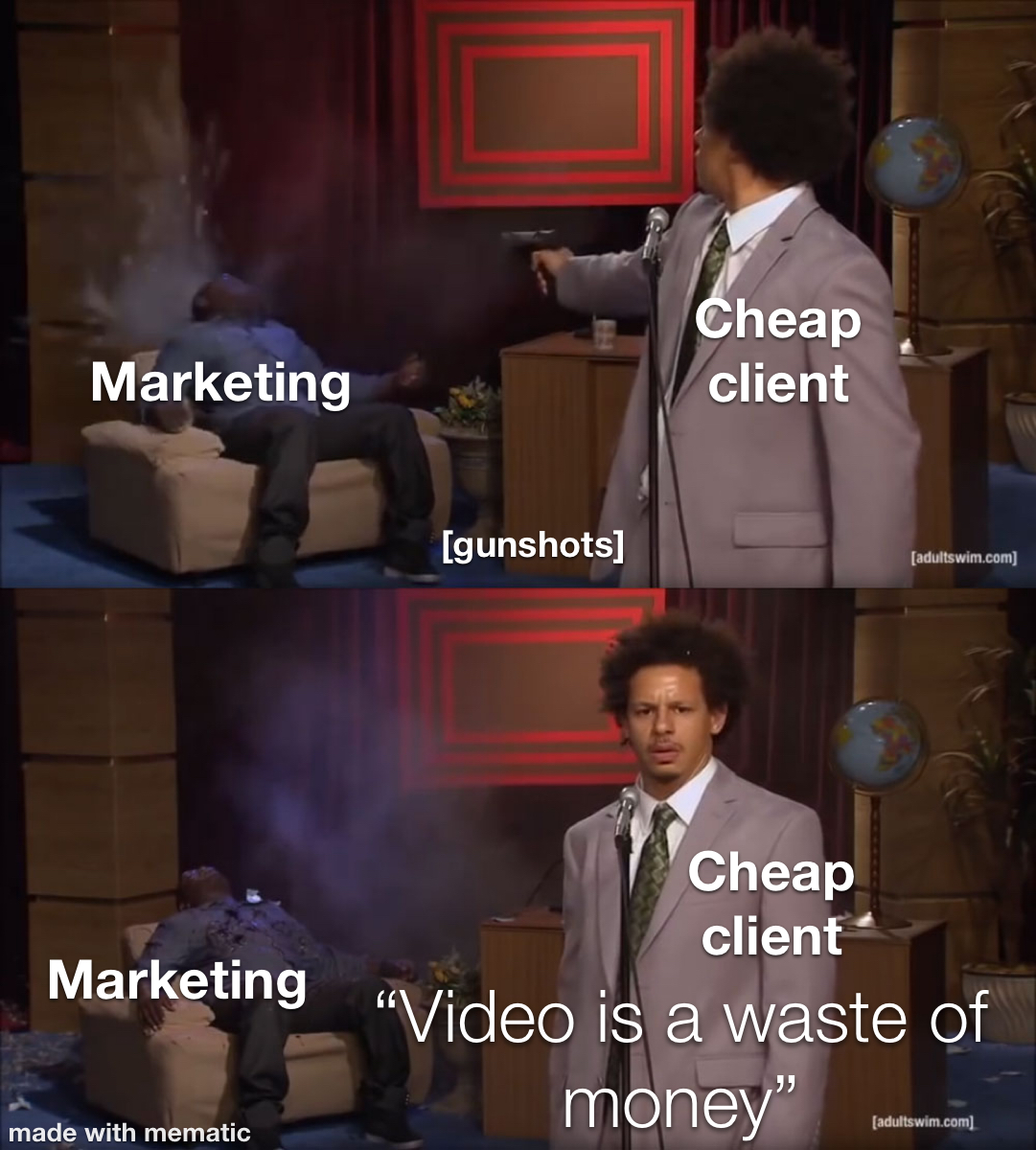
The Ugly Truth
Video production can be expensive. Good video production IS expensive. However, it’s totally worth the investment. Yes… I said “investment” because it should either make you money or save you enough money that you feel like you’re making more.
Conversely, there are cheap video options, but, often, they are a complete waste of time and money.
There are less expensive options, but that’s a topic for another post. Just keep in mind that you absolutely get what you pay for and, in the end, you need to plan for it.
Think of this process as buying a house: you have tons of options from a second-hand, run-down trailer house that has to be gutted and completely rebuilt on the inside, all the way to a waterfront mansion.
What Does a Video Cost?
The Loaded Question
You may or may not be surprised how often we get a call and the client asks, “yeah… how much does it cost to do a music video/commercial?”
The problem is that it’s a loaded question. I’m going to ruffle a few feathers here, but this has to be said: TV stations and one-size-fits-all video guys (or girls) have really done the entire industry a disservice with the approach of putting a flat fee on shooting commercials. We’ve encountered individuals who will “video anything for $500” and that number has stuck around like old gum on new sneakers.
The issue with that approach is that, most of the time, no matter what you are having videoed, it’s all going to look the exact same as every other job they do and, visually, your video will look no different from all of their other customers, which, in the end, just makes you more white noise in the background.
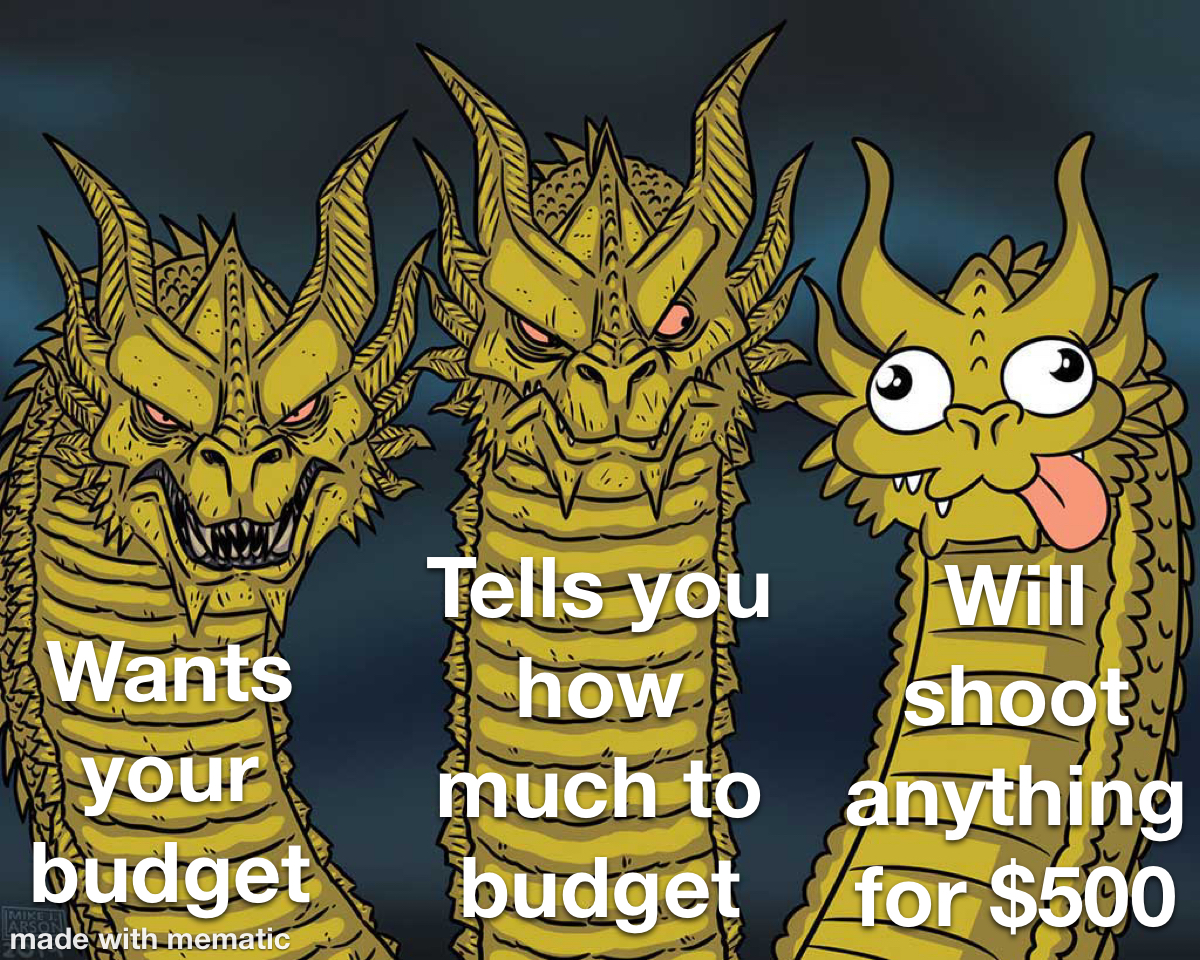
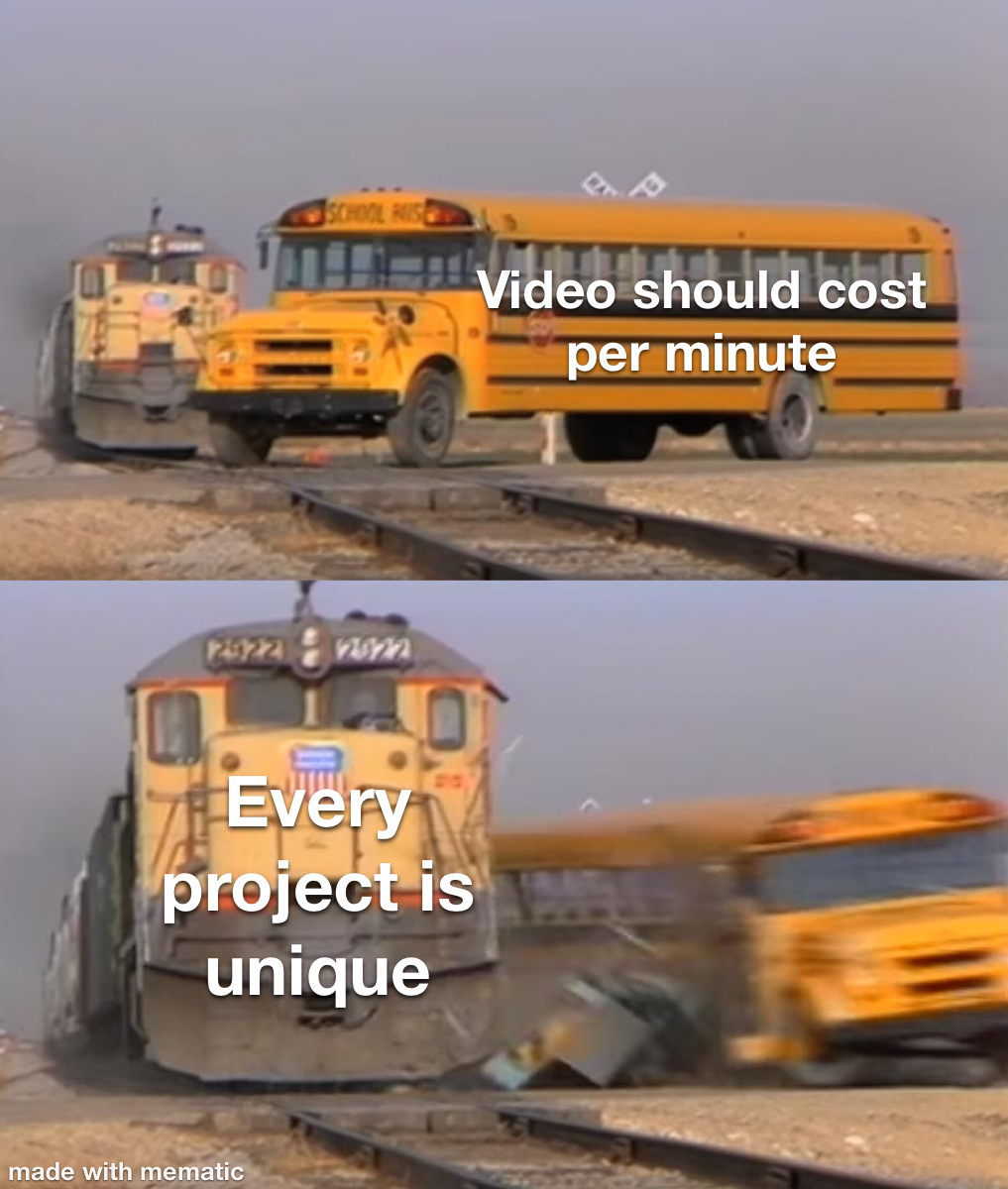
Cost Per Minute
“So, do you charge per minute of delivered video?”
I’m not really sure where this idea came from or why it continues to circulate. I’m sure there are production houses and agencies that have this down to a per-delivered-minute cost, but I’m going to go out on a limb and assert that most of are very cookie cutter. Same set up for every shoot and same editing template for EVERY SINGLE PROJECT.
We’ve worked for these jokers (yes, jokers) and I don’t have much nice to say about them. We’ve worked for them and they are generally the companies who offer “marketing” to places like furniture stores and dentist offices and literally everything they do looks the same across all of their clients (I’ll add that they don’t treat their vendors very well either).
I’m sure there are those that don’t fall under this category, but this has been our experience and you would be better off hiring your production yourself (I could spend an entire blog post on this, and I may just do that).
I digress… For a lot of productions, there’s no cost-per-delivered-minute pricing structure. It doesn’t make sense, and I’ll tell you why: production scale.
Sounds daunting, but it’s really quite simple. For our purposes here, I’ll define “production scale” as the amount of equipment and crew needed to complete a job.
Let’s look at two scenarios for shooting a one-minute video explaining a product:
Scenario 1 – you are shooting a simple sitting interview with three lights (key, fill, and back/hair lights) and a single camera, that’s a very minimal setup, won’t take long to set up, and can probably be done by a single person.
Scenario 2 – same message as the first scenario, but, instead of a sitting interview, your on-screen talent is inside a warehouse doing a walkthrough and you need more lighting, more time to set up (most likely multiple setups), an audio person to follow the talent with the boom mic, a camera operator who is moving with the camera, a director who is telling everyone what they are doing.
In both scenarios, the message is the same, but the way they are shot are two totally different ball games. Obviously, one is going to be more expensive than the other (you can probably guess which).
To visualize this, let me show you a couple of examples of a simpler set up vs a more complicated one, both for 30-second ads
These are both ads that Hamil Bros has produced and the price difference was significant.
Fewer Videos = Cheaper Price
We get asked this a lot, and the answer is, “yes, but no, but yes.”
“You quoted for 4 videos, but we really only need one. So, that means it will only cost a quarter of the price right?”
The short version is that production budgeting is not linear. So, half the videos does not mean half the price.
I don’t like having to navigate this one. Most often, the client has been blinded by this notion and explaining otherwise just seems like we’re taking advantage.
Hopefully, this section will help shed light why the math doesn’t work out this way.

If we look strictly at shoot days for a car commercial, this will help explain why, if you’re paying $10,000 for production on 4 videos, that doesn’t mean you pay $2,500 for 1 video.
Let’s assume you are getting 2 shoot days.
Day 1 Budget: $7,000 for shooting the cars
- Basic production crew with cameras – $2500 (day rate)
- Aerial footage – $1500 (day rate)
- Pursuit vehicle (car with a camera that gets exterior driving shots of the car in the commercial) – $3000 (day rate)
Day 2 Budget: $3000 for shooting the dealership
- Camera crew – $2500 (day rate)
- Audio crew – $500 (day rate)
Somewhere in the midst of this, you decide that, instead of 4 ads, you only really want to focus on 2 ads.
The day rates don’t change. Your post production budget (let’s say that budget was 5 days at $1800/day [$9000]) will go down by one, maybe two days.
Your total budget goes from $19,000 to $15,400 for half the deliverables.
You may only want half the amount of commercials, but the time it takes to shoot them is close to the same.
*this is why, if you’re going big on a set of ads, we recommend spending the little bit extra for more content.
How do I budget for video production?
I’m so glad you asked!
Let’s role-play for a second. A typical discovery call normal goes something like this:
Ross: “This is Ross.”
You: “Hi, I’m looking to get a video made. What does that typically cost?”
Ross: “Well, that’s a bit of a difficult question to answer. Every job we do is custom bid. What kind of video are you needing?”
You: “I need a commercial for my new homemade bar soap business.”
Ross: “Oh. That’s cool! Do you know how much you are looking to invest in your commercial?”
You: “I have no idea. I’ve never done this before. I’m just looking for prices.”
Ross: “Gotcha. The way we approach videos is that you give us a target number and we formulate a plan to see what we can do to fit within your budget.”
You: “Okay… What’s a good starting point?”
Ross: “We’ve had single commercials ranging in budget from $3,000 to around $10,000.”
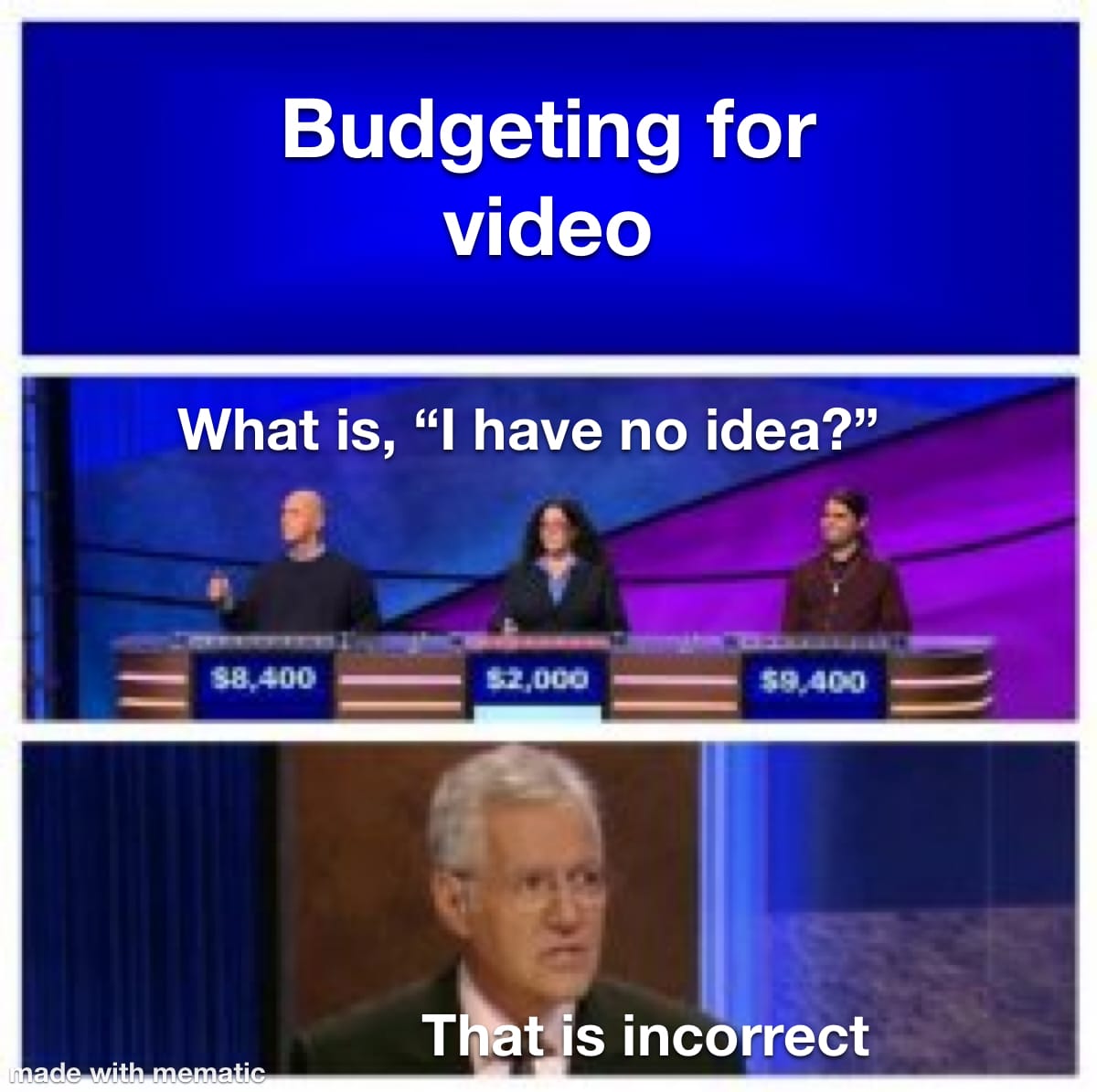

A lot of times, that kind of number has some sticker shock attached to it and we totally get that. However, this can be completely prevented. How? Always come to the conversation with a budget.
“But, I don’t have a budget!”
Yes, you do. Somewhere in your mind, you have the most vague of notions that the video is going to cost something. Just think about it really hard.
“I’m still coming up with nothing.”
You may think so, but you have come up with something.
“How can I have come up with something if I don’t know if the video is going to be $250 or $2,500?”
You just answered your own question. You do have some kind of expectations. You, for some reason, found it reasonable to expect $250-$2,500.

The other alternative to this is that you DO have a number in mind, but you think that withholding that number will get you a better price.
I can tell you, with full confidence, that you will be disappointed.
Why?
Because, when planning a budget, we always aim high with the intention of making sure everything you need will be covered. If you have a $5,000 budget and we give you a $10,000 target, you’re probably going to be taken aback, leave the negotiation immediately, and settle for something way below what you wanted, when, if you had given us your budget up front, we could have still given you something spectacular.
This all still begs the question: how do I budget for video production?
Our encouragement is to approach video with a healthy budget.
What is a healthy budget? Our answer will always be a few thousand dollars.
Cost vs Investment
How you view your budget will determine how far your money goes.
$3,000 sounds like a lot of money, and it kind of is, but if you approach it as an investment, your paradigm shifts.
Let’s look at it this way: would you spend $3000 on something that should last you a few years and, if you use it properly, make you money?
Let’s break it down over the life of the investment.
Assuming you want to do a brand story about your soap company; where you came from, where you are now, your values as a company, and why people should care about it.
You spend $3,000 today. Over the next three years, you sell 100 bars of soap a month at $10 a bar because this is some true artisan soap. So many people tell you that they watched your video and really wanted to support your business because it was a good use of their money. Over 36 months, your video investment ended up being just under $84 a month to turn around and sell $1000 a month of soap.
Suddenly, that doesn’t seem so bad.
Granted, I don’t know the costs involved in making soap, but, I’m willing to bet that within 6 months to a year, you have already broken even on your investment, if not sooner.
The issue is that so many small (and big) business owners look at video as an expense rather than an investment.
Naturally, we want to cut down on expenses, but will dump a lot of money into a good investment.
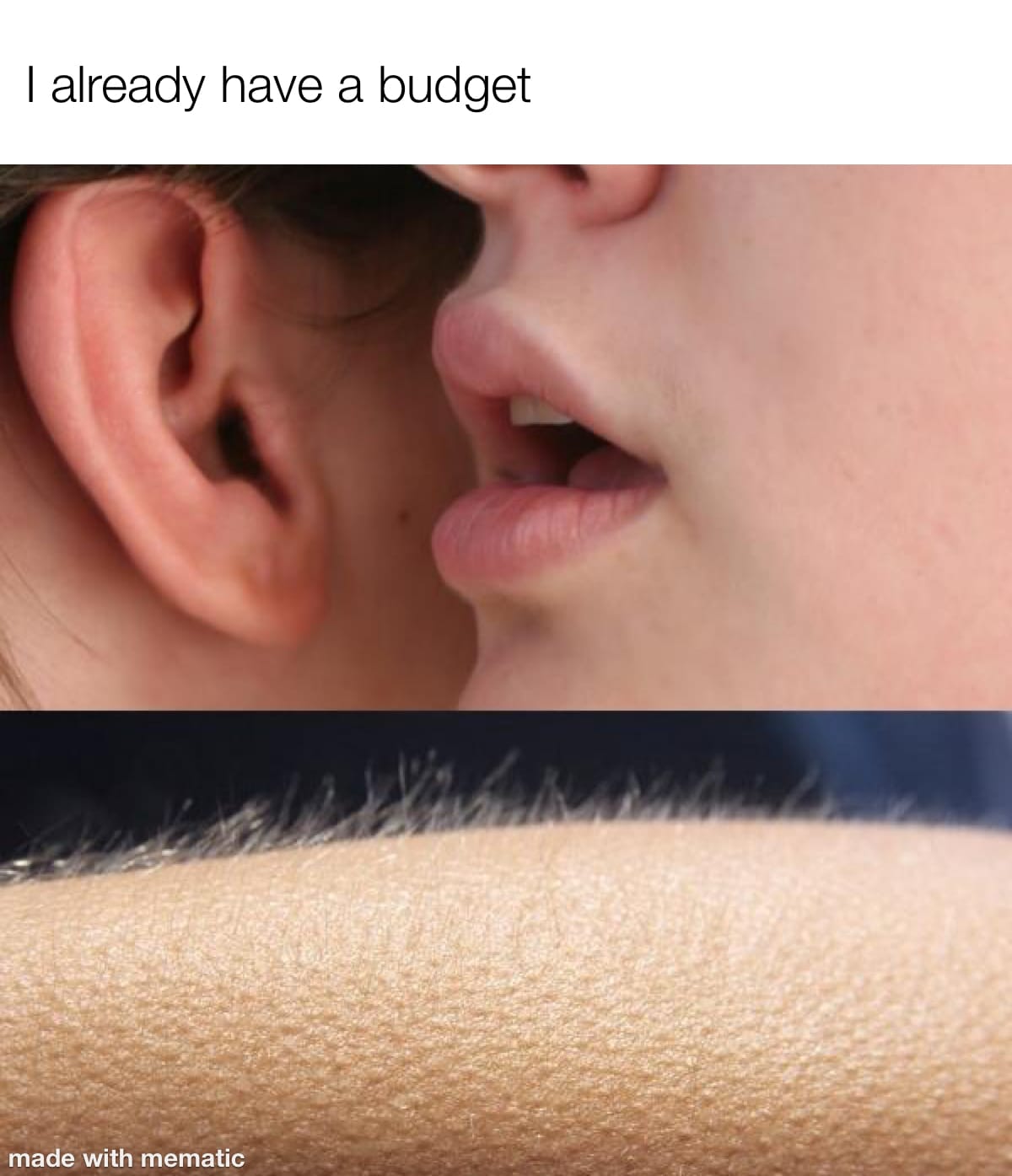
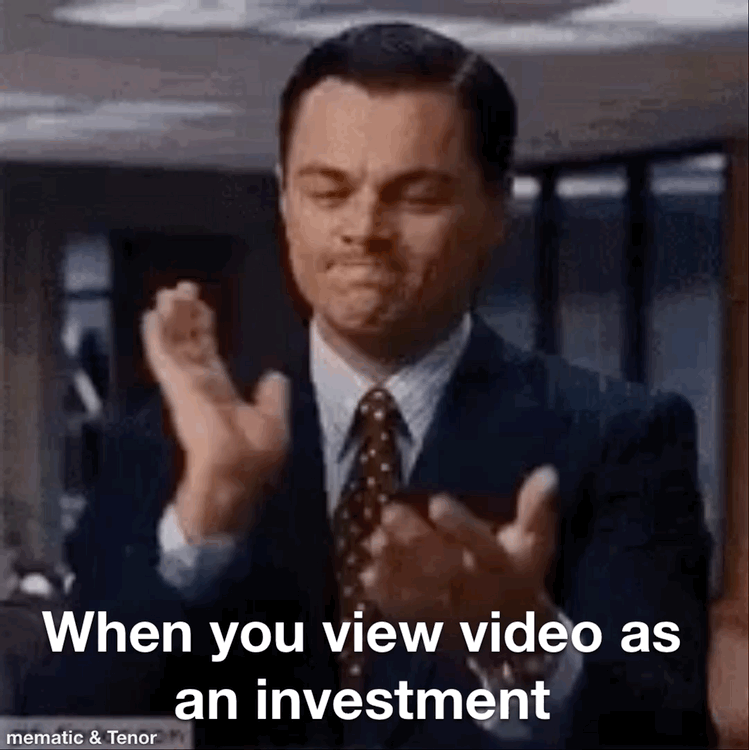
There’s a lot to be considered in this realm, but I hope this breakdown will, at the very least, help start shifting your view on budgeting for your video production.

Recent Comments